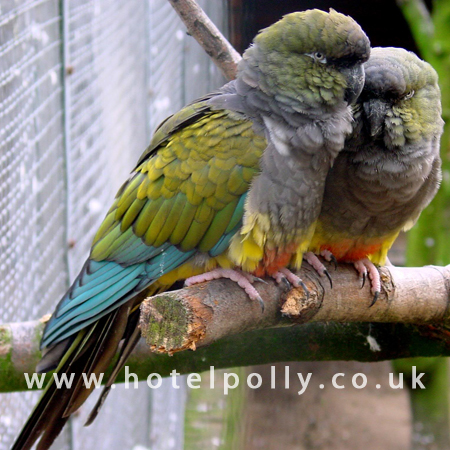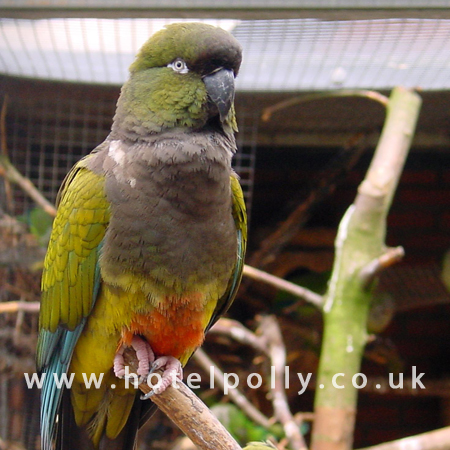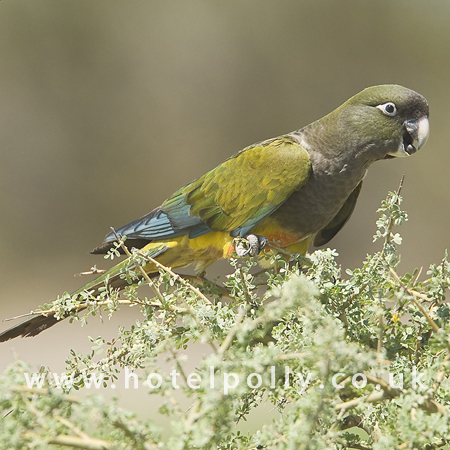


Latin name: Cyanoliseus patagonus
Weight: 256 - 281 grams
Life Span: 20 - 30 years
Intelligence
These birds are quite intelligent, and can become fairly good talkers. However they do have a harsh voice and can get rather loud. This along with being very sociable makes them an ideal aviary bird.
They are very social and love companionship, their natural behaviour is to live in very large groups and to nest closely to one another. They make a very fine and affectionate pet.
Talking ability
These conures are usually "above fair" when compared to other conures, but they still don't have the reputation like the Half-moon or Blue-Crown conures. They certainly can learn a couple or a few words/phrases.
Feather Plucking
Feather picking and susceptibility to the usual psittacine diseases can become health concerns with the Patagonian conure.
Housing for your Patagonian Conure
- Conures love roomy cages! A cage best suited for a conure must be large enough that the tail does not touch the bottom, and the bird has enough room for unrestricted movements.
- A minimum size of 44"x26"x40" (120 x 65 x 100 cm) is recommended This will provide room for both horizontal exercise and vertical climbing.
- We recommend providing two perches, sized between 3/4" to 1" (2 - 2.5 cm). Place one up high for roosting and one low by the food, water, and gravel dishes. Natural perches from willow, poplar and fruit trees are good for the bird's feet and for it's beak. The gnawing it will do on the perches will also alleviate your pet's boredom.
- Place the cage where it will be away from harmful fumes and drafts. To provide you pet with a sense of security, it is recommended that you cover the cage at night.
Feeding your Patagonian Conure
- A conure's diet consisting of a good small parrot mix which is supplemented with various fruits, green foods, millet spray, and occasionally some mealworms is generally regarded as suitable.
- There are pros and cons to feeding only a formulated diet as well as feeding only a seed diet.
Supplements
- Supplemental foods include apples, grapes, many garden vegetables such as spinach, lettuce, carrots, corn on the cob, peas, and sweet potatoes.
- A cuttlebone, or gravel can be provided in a separate dish.
- Additional proteins can be offered such as cottage cheese, hard boiled eggs, and raw peanuts.
- Vitamins can be added, either to the drinking water or the food.
PS patagonian means "big feet" in Spanish.
